Worried about the growth? Here are the worst places to keep a Chinese money plant indoors (and where to put it instead)!
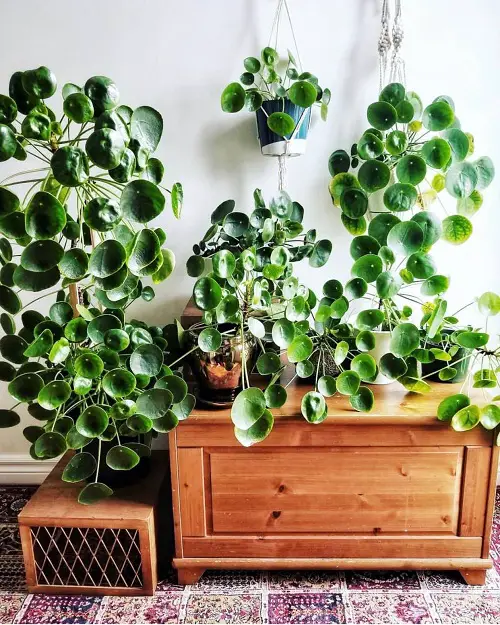
If you’re growing a Chinese money plant (Pilea peperomioides), its round, pancake-like leaves are probably your favorite thing about it. But those pretty leaves can start turning yellow or fall off if the plant isn’t kept in the right spot indoors.
Here are the places you should avoid putting your Pilea, and what you can do instead.
Worst Places To Keep a Chinese Money Plant Indoors
1. Near a Heat Vent or Radiator
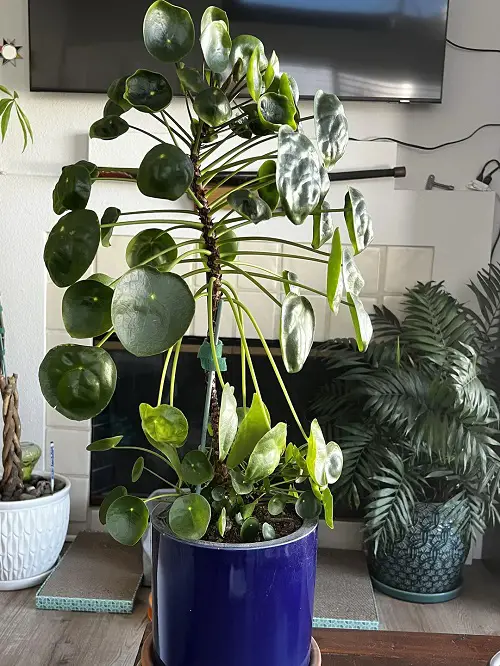
Heat sources emit dry, hot air that rapidly depletes moisture from the soil and leaves. Warmth is obviously good for the plant, but hot, arid air from vents or heaters can dry the plant out way too fast. The soil loses moisture, the leaves get crispy at the edges, and before you know it, your plant starts to look tired.
What to do: Move it away from direct exposure to vents. Pick a spot that’s warm but not hot and has stable temperatures (ideal range is 65 to 75 F or 18 to 24 C).
2. Dark, Windowless Rooms
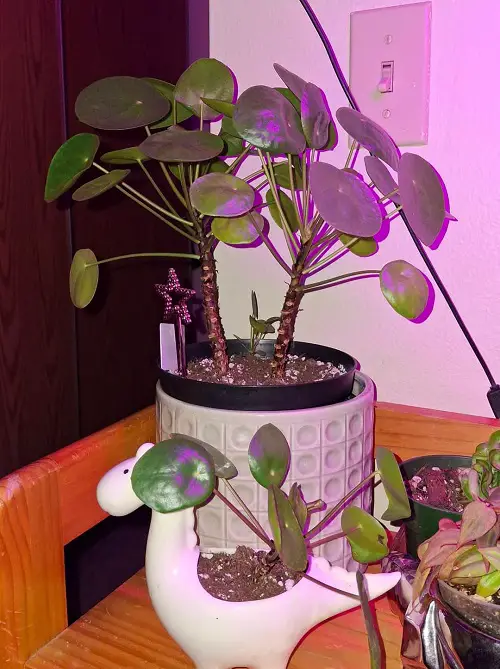
Chinese money plants are light-loving houseplants, and placing them in a dimly lit room or a windowless bathroom will lead to slow growth and pale leaves.
A windowless room or a dark corner will cause the plant to stretch out awkwardly toward any bit of light it can find, giving it a weak, leggy look. The leaves may also lose their healthy green color.
What to do: Use a small LED grow light if you don’t have a bright window. It doesn’t have to be fancy—just something to give your plant around 8–12 hours of light daily.
3. Near an Air Conditioner or Cold Drafts
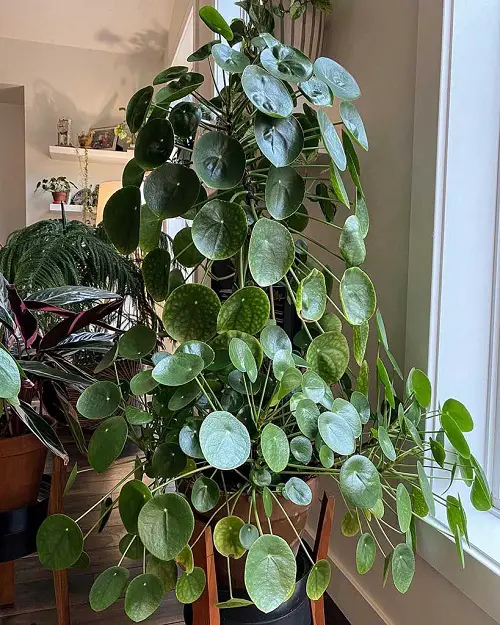
Cold air can be just as harmful as hot air. If your Pilea is getting hit by blasts of air from an AC or a chilly window, it may drop leaves or stop growing altogether. That’s because cold drafts from air conditioners and open windows in winter can shock the plant and cause leaf drop and slowed growth.
What to do: Make sure it’s not in the direct line of airflow. If your only option is an air-conditioned room, just move the plant a bit to the side, away from the vent.
4. On Top of Electronic Appliances
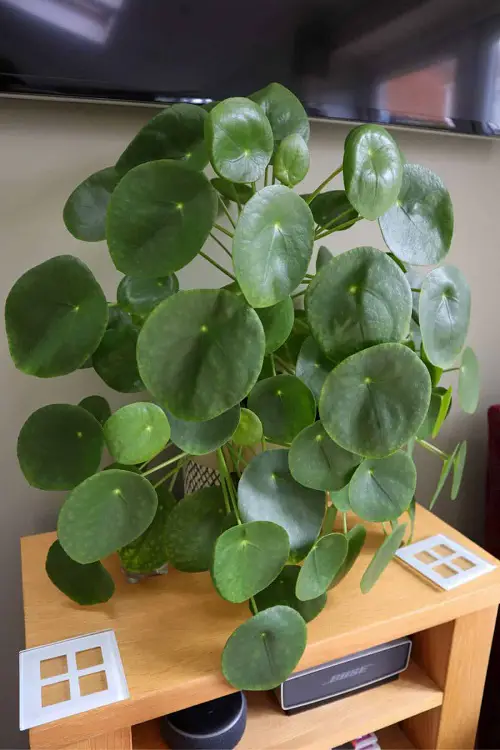
Many people unknowingly place houseplants on top of refrigerators, microwaves, WiFi routers, or televisions. The thing is, electronics give off heat, even when you don’t notice it.
That constant warmth dries the soil faster than normal, which means you’ll need to water more often, and it’s easy to miss when the plant needs a drink. Also, some of these appliances can vibrate a little, which isn’t ideal for roots.
What to do: Use a nearby shelf instead. If space is tight, go for a floating shelf near a window—it’ll look great and give the plant better light and airflow.
5. Directly Against a South-Facing Window

Pilea loves bright light, but placing it directly against a sunny, south-facing window without protection is bad. Sitting too close to a sunny window can burn the leaves, turning them brown and dry. The plant might also dry out too fast, especially in summer.
Over time, excessive sun exposure will evaporate soil moisture and make it difficult for the roots to stay hydrated.
What to do: If your best light comes from a south-facing window, just pull the plant back a bit or hang a sheer curtain to soften the light. A few feet away still gets enough brightness without the burn.
6. Deep Bookshelf or Enclosed Cabinet

For bookworm gardeners, a bookshelf may look like the perfect place for a compact houseplant, but if the shelf is too deep or enclosed, your Chinese money plant will struggle with airflow and light exposure.
Deep shelves or closed cabinets often have poor airflow and low light. It’s easy to forget the plant is there, and over time, if moisture builds up, it can get leggy, weak, or even develop mold.
What to do: Keep it near the front of the shelf or on an open rack. You could even rotate the pot once a week so all sides get some light. Bonus—this helps the plant grow more evenly, too.
Your Chinese money plant doesn’t need much fuss, but location really matters. Keep it in a spot with bright, indirect light, stable temperatures, and good airflow—and you’ll enjoy healthy, happy growth for a long time.


